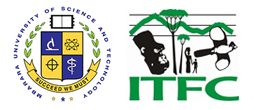The amount of food harvested, processed and stored by households determines food availability—a key dimension to food security. In developing countries, frontline households around protected areas harvest wild climbers for making food security products. When access to the wild climbers is denied, households adapt by using other available alternatives such as plastics with potential consequences to biodiversity.
The relationships between harvesting wild climbers and: (a) food availability, (b) plastic use, and (c) wild climber populations have rarely been investigated. We interviewed 119 frontline households adjacent to Bwindi Impenetrable National Park, Uganda to evaluate the relationships between household access to wild climbers and: (a) plastic use and (b) food security.
We used forest surveys to assess the impact of harvest on the population structure of three mostly utilized wild climbers. The frontline households used more wild climber products (65.02%) than plastics (34.97%). Fifteen wild climbers were harvested for food security products. Two of these; Dracaena laxissima and Smilax anceps depicted size class distributions similar to those of healthy sustainable plant populations, while Monanthotaxis littoralis depicted a size class distribution of unsustainably harvested plant populations.
We recommend increased access to wild climbers for enhancing food security and minimizing the use of plastics.
Report File
- DocumentBitariho et al 2020.pdf (2.49 MB)
